Brightness Adaptation And Discrimination In Image Processing
Brightness adaptation and discrimination in image processing. 23 Brightness Adaptation And Discrimination 24 Image Sensing And Acquisition 25 A Simple Image Formation Model 26 Image Sampling And Quantization 27 Representing Digital Image. Explain the steps involved in digital image processingor 2. Further if after a period in darkness the eye is exposed to a bright surface theapparentbrightness ofthis surface decreases duringthefirst few minutes.
Nikou Digital Image Processing E12 Brightness Adaptation Discrimination The human visual system can perceive approximately 1010 different light intensity levels. It cannot operate over the range simultaneously. For a given condition the sensitivity of the visual system is called the brightness adaptation level ex.
Cannot accomplish this range simultaneouslyThe current sensitivity level of the visual system is called the brightness adaptation level 11 Brightness discrimination. At any time instance we can only discriminate between a much smaller number brightness adaptation. 213 Brightness Adaptation and Discrimination Because digital images are displayed as a discrete set of intensities the eyes ability to discriminate between different intensity levels is an important con-sideration in presenting image-processing resultsThe range of light intensity lev-.
At this adaptation the eye can perceive brightness in the. Brightness Adaptation Discrimination The human visual system can perceive approximately 1010 deferent light intensity levels However at any one time we can only discriminate between a much smaller number brightness adaptation Similarly the perceived intensity of a region is related to the light intensities of the regions. BRIGHTNESS ADAPTATION AND DISCRIMINATION Range of light intensity levels to which HVS human visual system can adapt.
The subjective brightness is a logarithmic function of light intensity incident on the eye. Brightness adaptation and discrimination Digital images displayed as a discrete set of intensities Range of human eye is about 1010 different light intensity levels from scotopic threshold to the glare limit Fig 24 Visual system cannot operate over the enormous range simultaneously. DIFFERENTIAL BRIGHTNESS DISCRIMINATION 407 threshold is raised by exposure to high illuminations Nutting 1920.
Subjective brightness means intensity as preserved by the human visual systemBrightness adaptation means the human visual system can operate only from scotopic to glare limit. ¾ Understand the basics of the human visual system as they relate to image processing ¾ Understand image quantization in both the spatial and brightness domains. It accomplishes this large variation by changes in its overall intensity.
Definition of digital image pixels representation of digital image in spatial domain as well as in matrix formBlock diagram of fundamentals steps in digital image processing application of digital image processing system Elements of Digital Image Processing systemsStructure of the Human Image Formation in the Eye Brightness Adaptation and. Fundamentals Human perception phenomena Brightness Adaptation Brightness Discrimination Simultaneous Contrast Optical Illusions 11.
In photopic vision the range is about 106.
The eyes ability to discriminate black and white at different intensity levels is an important consideration in presenting image processing result. Subjective brightness means intensity as preserved by the human visual systemBrightness adaptation means the human visual system can operate only from scotopic to glare limit. In photopic vision the range is about 106. At a given sensitivity the eye can simultaneously discriminate only a small number of intensity levels. I Weber ratio the experiment ΔI c I. Explain Brightness adaptation and Discrimination The digital images are displayed as a discrete set of intensities the eyes ability to discriminate between different intensity levels. Digital images are displayed as a discrete set of intensities. Brightness Adaptation Subjective brightness means intensity as preserved by the human visual system Brightness adaptation means the human visual system can operate only from scotopic to glare limit It cannot operate over the range. For a given condition the sensitivity of the visual system is called the brightness adaptation level ex.
For a given condition the sensitivity of the visual system is called the brightness adaptation level ex. Explain the steps involved in digital image processingor 2. 23 Brightness Adaptation And Discrimination 24 Image Sensing And Acquisition 25 A Simple Image Formation Model 26 Image Sampling And Quantization 27 Representing Digital Image. Brightness Adaptation Discrimination The human visual system can perceive approximately 1010 deferent light intensity levels However at any one time we can only discriminate between a much smaller number brightness adaptation Similarly the perceived intensity of a region is related to the light intensities of the regions. The background illumination ΔI c. Nikou Digital Image Processing E12 Brightness Adaptation Discrimination The human visual system can perceive approximately 1010 different light intensity levels. It accomplishes this large variation by changes in its overall intensity.


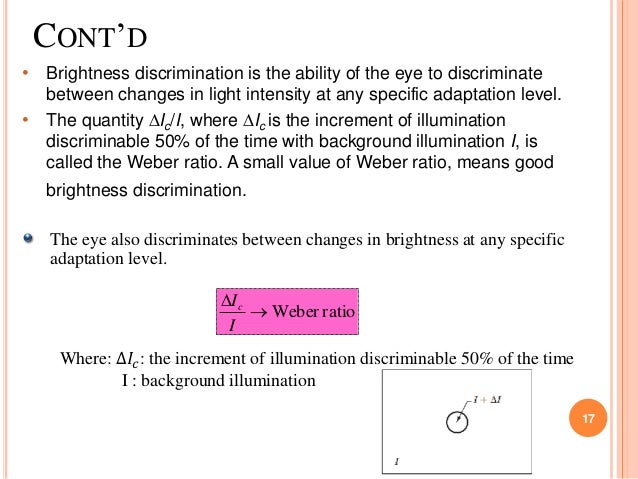

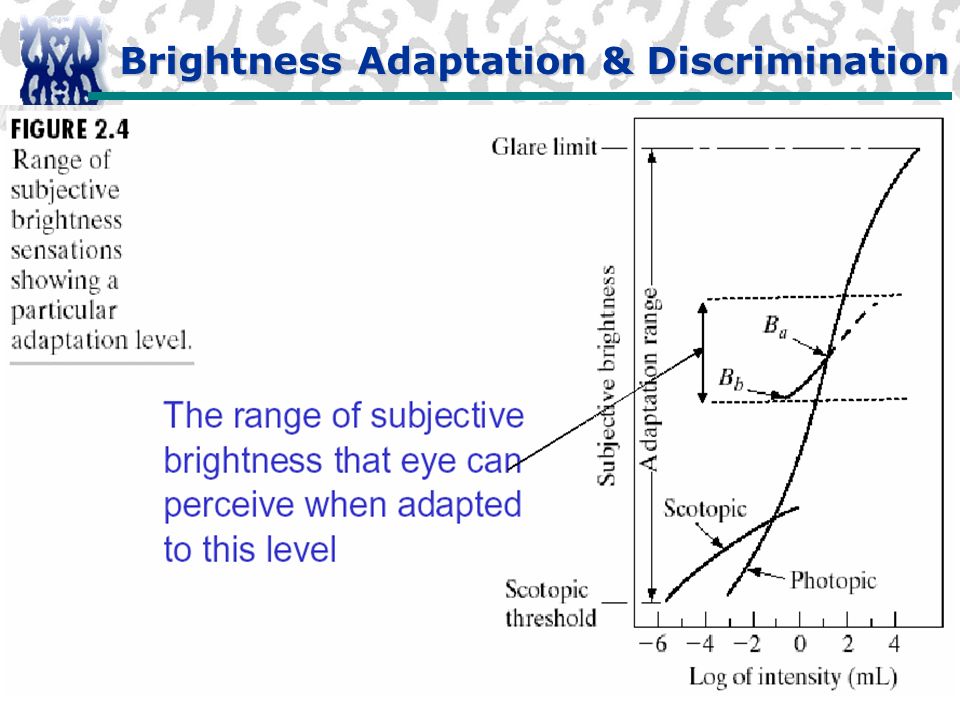


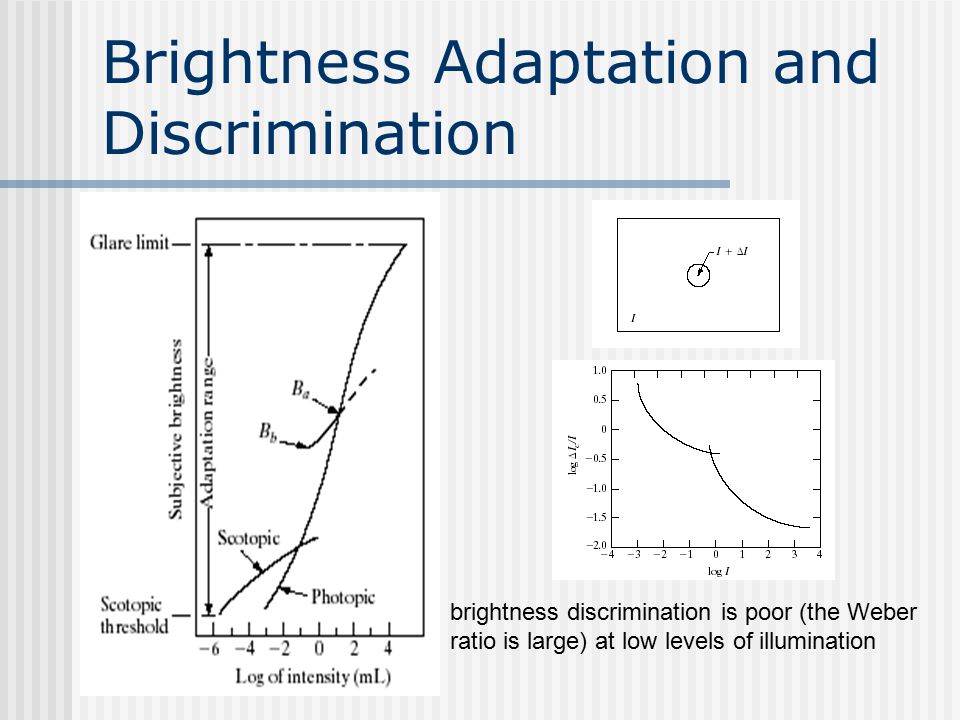



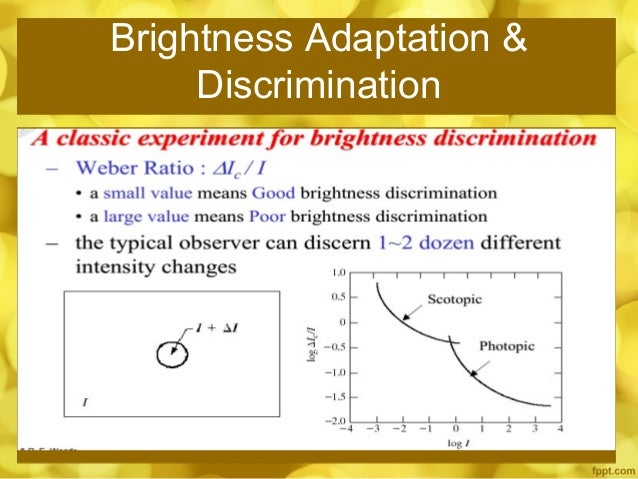

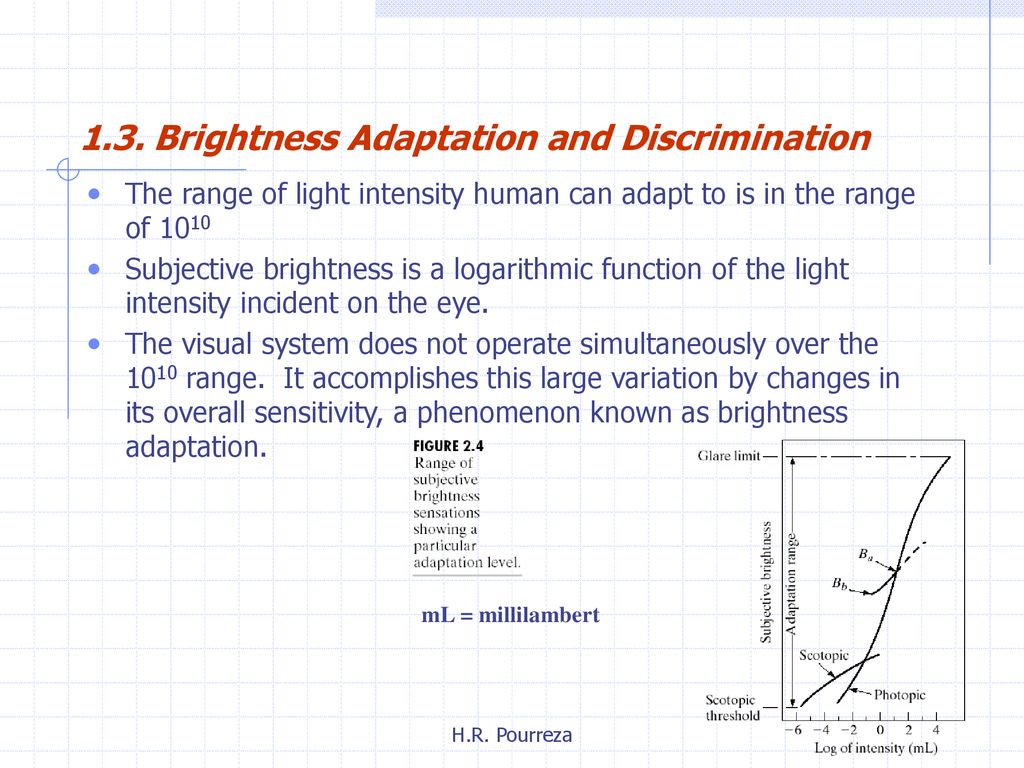
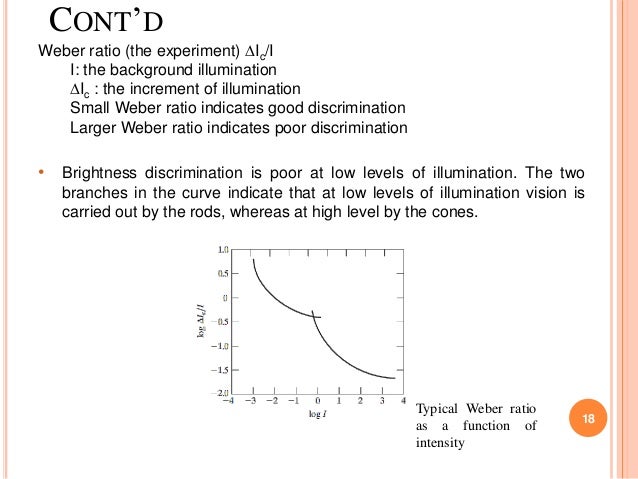
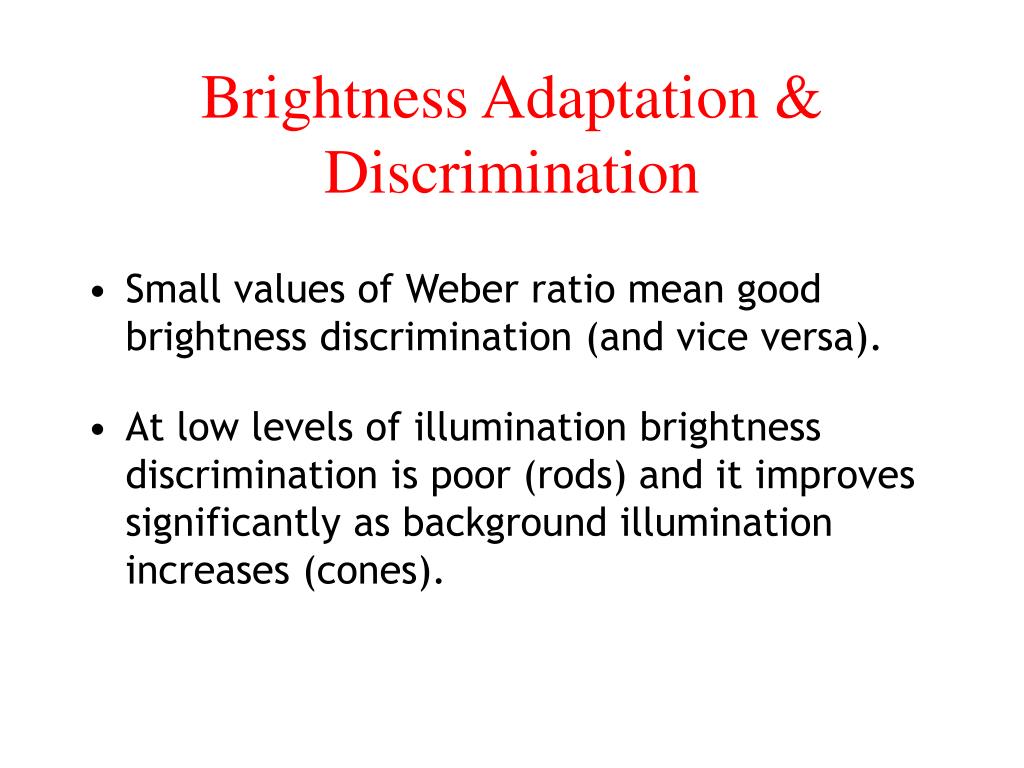


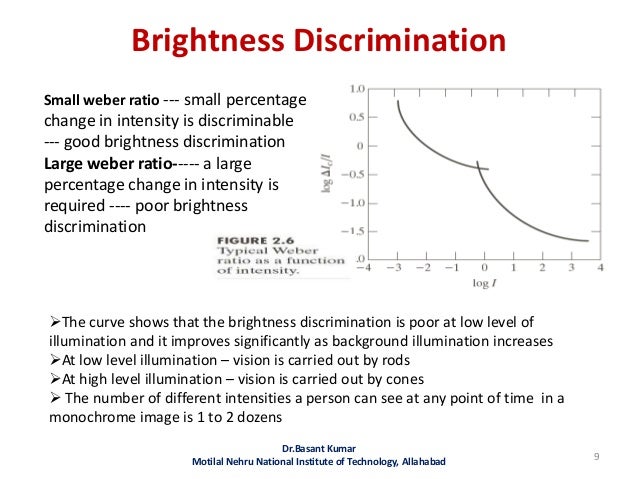


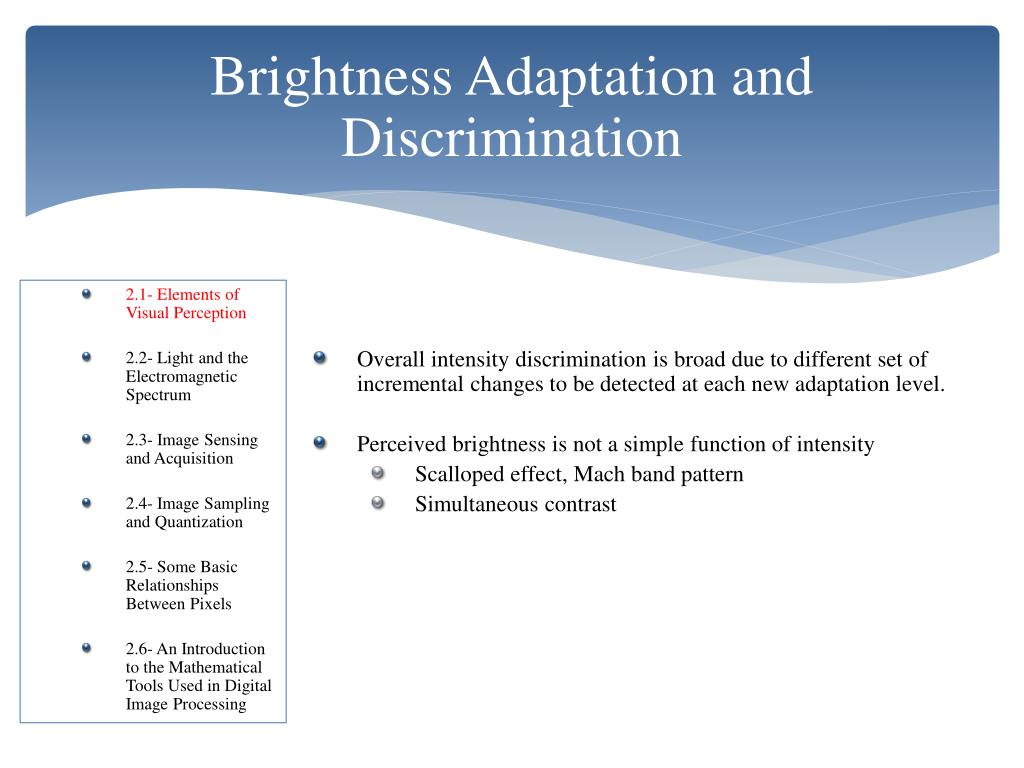



















Post a Comment for "Brightness Adaptation And Discrimination In Image Processing"